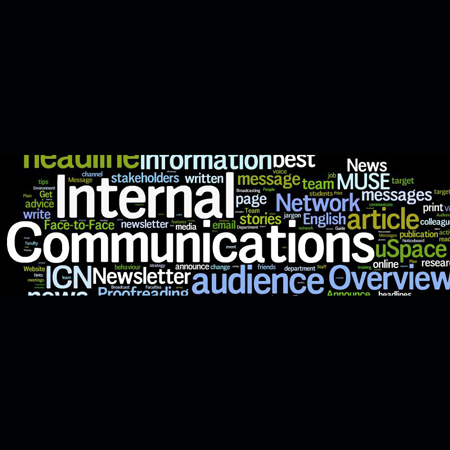April 10, 2014– At CECP, we have the privilege of talking to more than 100 leaders in corporate citizenship and community investment per quarter, and one of the common challenges we hear is the difficulty in sharing the company’s community impact and opportunities for engagement with its closest audience: its employees.
What makes this so challenging?
- Scarce real estate: Large companies often have tightly controlled messaging to employees, and negotiating with other departments to place a question on an internal survey or for space on the intranet can be a challenge. In today’s fast-moving communications landscape, internal approvals can slow the speed of delivery.
- Limited budget: When scarce marketing dollars are unleashed to share the story of companies’ community impact, the audience targeted is usually external. Internal communications typically need to leverage existing infrastructure and channels, finding employees where they are.
- Tools and access: Some companies, including restaurant chains, retail stores, and utility and extractive companies have numerous employees who are not online during the day and who may not have regular access to a computer.
- Executive buy-in: The messenger matters. Busy senior executives may not have time to personally communicate the value of the companies’ community investments. If there doesn’t seem to be buy-in from leadership, programs may lack support.
While each company’s unique culture drives the appropriate channels and messages, we’ve noticed a few promising practices which help break down those seemingly intractable boundaries and invigorate your workforce around a shared commitment to living out your company’s values.
Run an Internal Campaign
Allstate recently unveiled an internal brand, Force for Good, which encourages employees to carry out three actions every day: Do the right thing, Put people before policies, and Defy expectations. Founded in consumer research, the internal brand reflects Allstate’s brand promise to customers. The internal communications plan, led by Vicky Dinges, senior VP, Corporate Responsibility and Enterprise Communications, delivered an unforeseen level of excitement to employees across the company. Because of the launch’s success, Force for Good and its accompanying attributes have since become not only the words by which to live and work, but the lens through which teams help drive Allstate’s transformation into an even more customer-centric organization. This commitment also comes through in the employee value proposition: Good Work, Good Life, Good Hands. Employees and agency owners reinforce the brand’s Good Hands® Promise by bringing good to local communities, an important driver of consideration and reputation – and a key part of the company’s legacy.
Terminology
Companies often grapple with which term to use for their activities in responsibility and community engagement. Is it Corporate Philanthropy? Community Relations? Societal Investment? It’s not a one-size-fits-all question, even within a company. Allstate recognized that outside the company, Corporate Responsibility resonates with stakeholders, whereas internally, Community Involvement is more effective. After all, many employees and agency owners consider giving back part of who they are. The terms do not have to be the same, and recognizing these distinct audiences is step one.
Empower Employees as Community Leaders
Gap Inc.’s open-source employee brand and website, Be What’s Possible, provides an easily-accessible portal for employees interested in donating, getting matching funds, volunteering, reporting volunteer hours, and learning about the company’s programs to invest in youth in the developed world and women in the developing world. Perhaps the most groundbreaking element of Gap Inc.’s engagement strategy is the appointment of community leaders — sought-after roles in local stores, corporate offices, and other company sites—who forge relationships with nonprofit organizations and develop engagement opportunities for their team members. The “Change the World Toolkit” provides tips for finding a community partner, getting to know the partner so that the Gap Inc. team and the community organization can develop a long-term relationship, and engaging in skills-based volunteerism. Turnkey event planning and communications templates make engagement easy, replicable, and scalable.
Use Employees as Your Ambassadors
GSK’s innovative PULSE program, started in 2009, sends employees on sabbaticals to work with nonprofits around the globe and domestically, using their core job skills to address global health challenges. While these extended leaves of absence could negatively impact colleagues who must cover for their team members, GSK has found that the reverse is true. The employee volunteers come back refreshed, invigorated, and with new ideas to advance their team’s work. But, they don’t wait until the end of the experience to share those insights. Instead, PULSE volunteers report from the field to the GSK PULSE Volunteers blog site, allowing their colleagues to feel more connected to their experience. The blog has become a treasure trove demonstrating the company’s values, which inspires other employees to get involved and feel part of the company’s social impact.
Cross-Functional Collaboration
Travelers measures website hits to stories from community investment that appear on their internal landing pages, “Inside” and “Community Connections”. These posts consistently perform well on the sites, and “feel good” stories are often shared again by employees on social media. Because of this demonstrated impact, Corporate Communications values Community Relations as an asset to the business and its culture, and they have assigned a dedicated Communications colleague to Community Relations to provide unlimited support. Further strengthening the cross-functional collaboration, Marlene Ibsen, CEO, Travelers Foundation, sits on the Marketing Leadership team; executive leaders are brought in to serve as sponsors for various Community Relations activities; and Human Resources collaborates on events and coordinates nonprofit board placement.
What challenges do you have in engaging internal audiences? What works well at your company?


